Hidden Churches Could be Ethiopia’s Most Adventurous Hiking Trail
Scaling the Gheralta Mountains requires the strength of faith
24 July 2019

All Credits: PA
Illuminated by flickers of candlelight, an elderly pilgrim squats in the mud, reciting passages from a well-thumbed, leather-bound copy of the Old Testament.
Around him, figures swaddled in ghostly-white linens are stacked tightly together, covering every crack, crevice and precipice of Lalibela’s ancient rock-hewn churches. Having walked for days, the exhausted bodies lay stiller than corpses in a mortuary; but when sunlight spears the horizon in six hours’ time, heralding Ethiopia’s Christian Orthodox Christmas Day, this place will be very much alive.
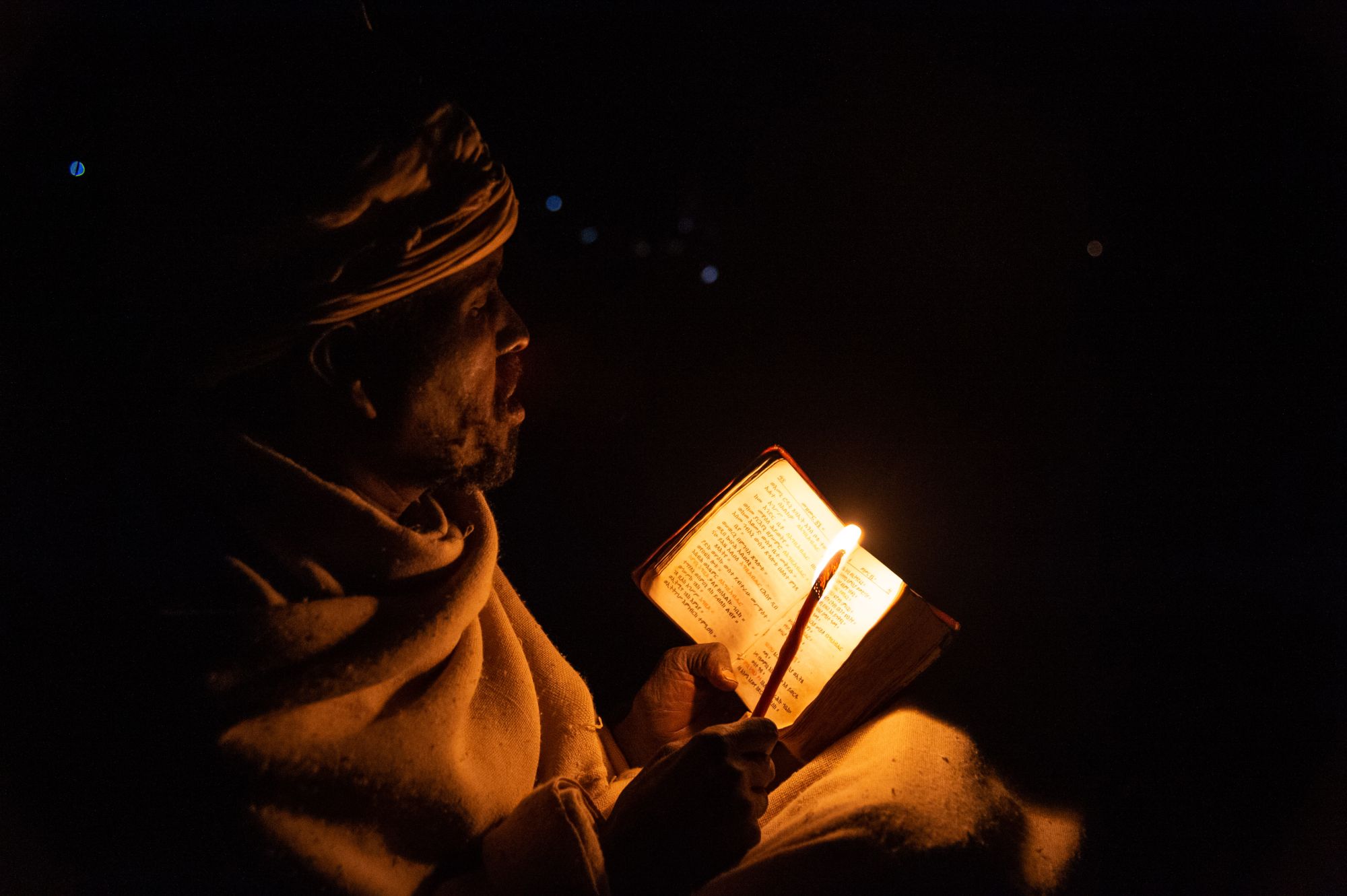
Famous for its elaborate places of worship carved into the earth’s core, Lalibela, a small town in northern Ethiopia, is the heartland for religious festivals such as Genna, celebrated around January 7 every year. While the faithful queue for hours to find a patch of rock at Bete Maryam (House of Mary), one of Lalibela’s 11 monolithic churches dating from the 12th century, I’m given privileged fast-track access.
SEE ALSO: You Can Now Visit a 4,000 Year Old Pyramid Just Opened to the Public in Egypt
In search of an elevated position, I clamber barefoot over human husks so weary and fragile I fear they may crumble into dust. But as dawn approaches, drums and dancing coax these chrysalides to unfurl, filling the holy caves with a flutter of angelic butterflies.

Witnessing Genna is undoubtedly a spectacle and an alternative way to spend the festive period; but year-round, Ethiopia’s churches are open for business, and even agnostics can’t fail to be moved by an enthralling ancient culture criminally overlooked in Western history books.
Home to the Ark of the Covenant (a chest containing tablets inscribed with The Ten Commandments), Ethiopia has been shaped by Christianity, and many of the country’s elaborate, historic and often hard-to-reach churches are still a focus for the community today.
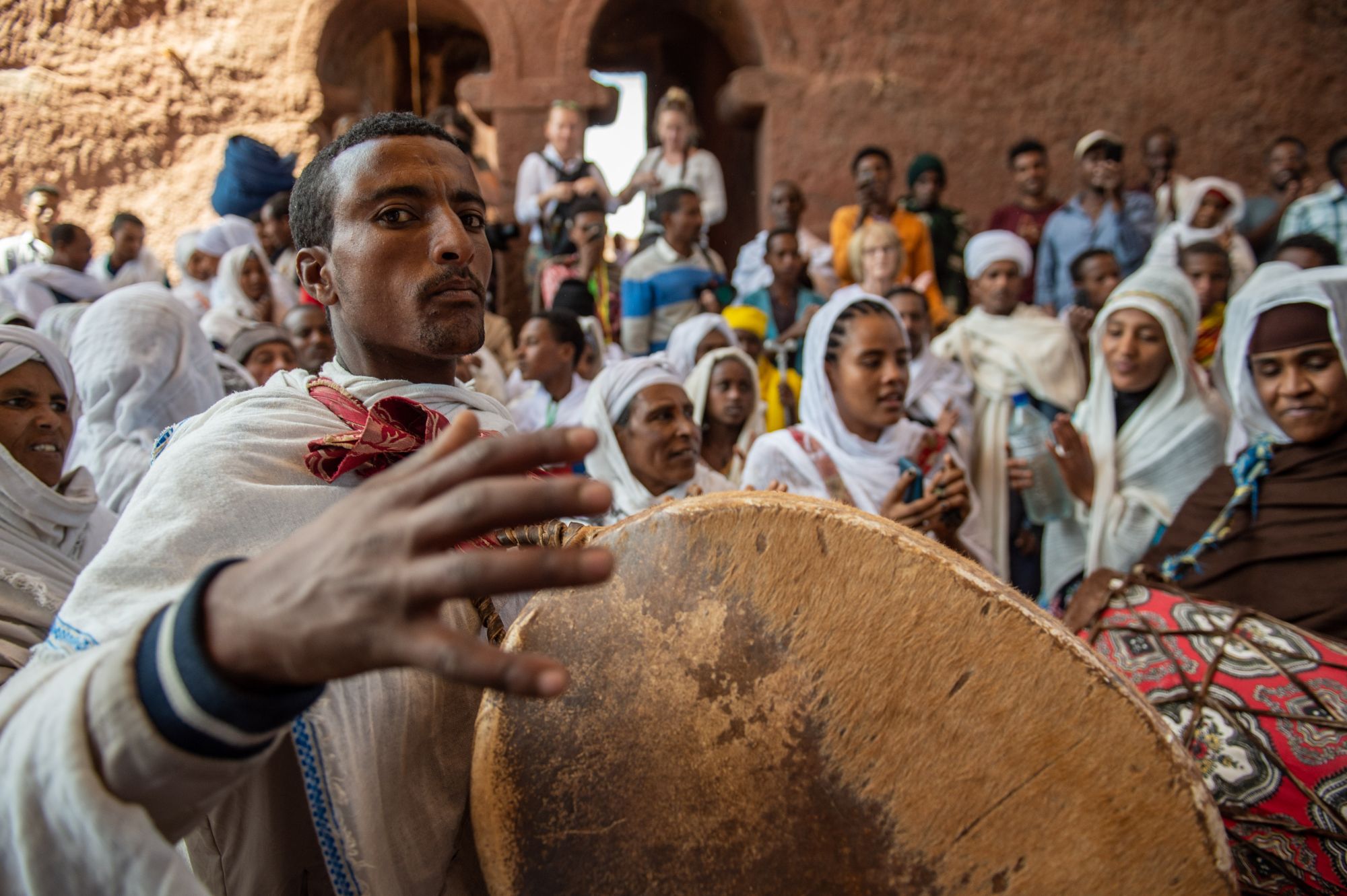
Lalibela is already a popular stop on the tourist circuit, but further north in the region of Tigray, which borders Eritrea, the Gheralta Mountains conceal numerous frescoed caverns sculpted more than six centuries earlier. YellowWood Adventures is the only British operator to offer multi-day camping trips in the area, and I’ve joined their pioneering tour, venturing where few other Westerners tread.
Eroded by the elements, sandstone pinnacles soar from the arid earth, swirling with an inferno of fiery colours. Trails follow a series of narrow canyons knifing the landscape, steeply rising to high-altitude plateaus at eye-level with the clouds.
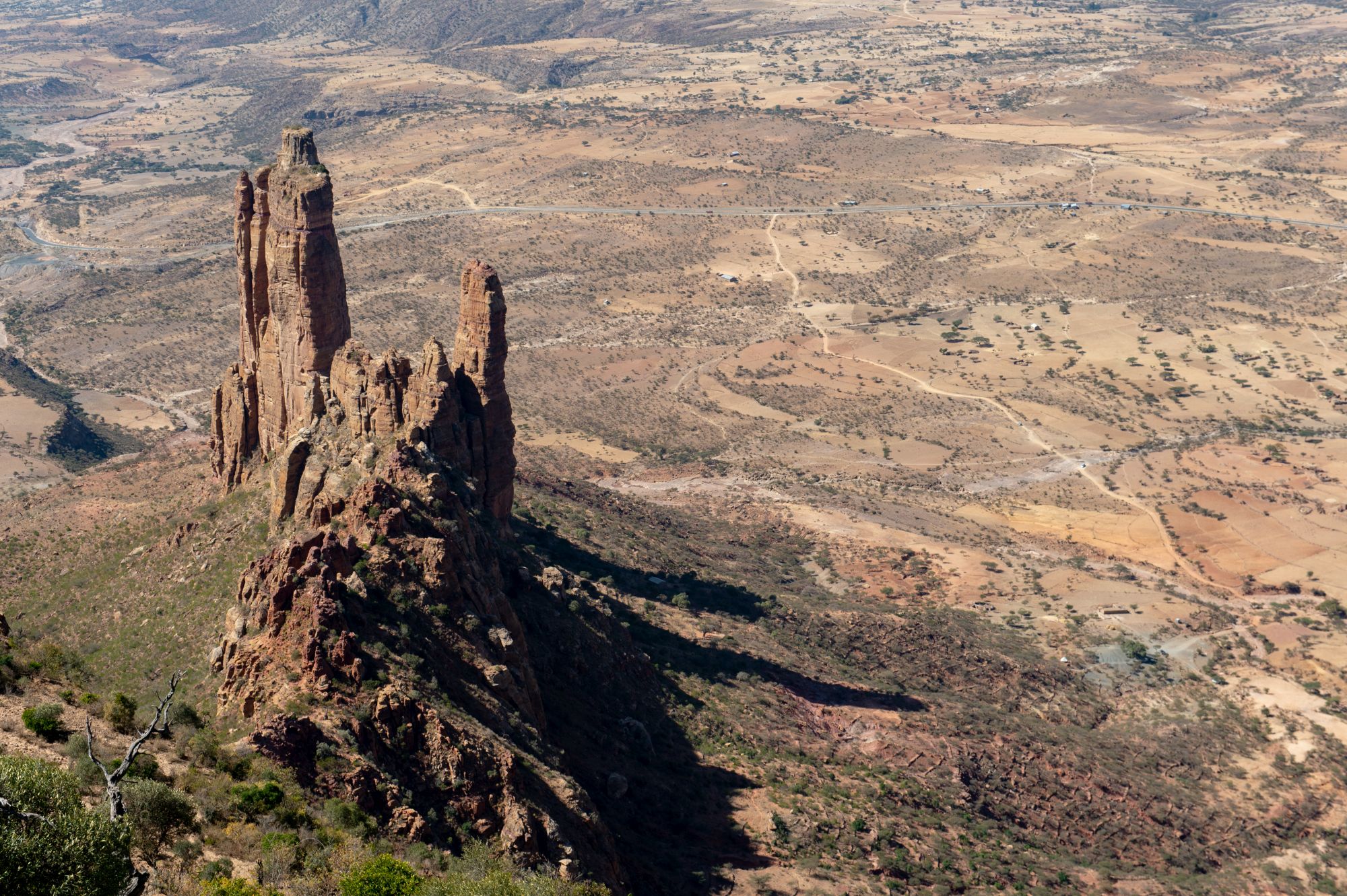
Carrying baskets of injera (flatbread) and new-born babies, a train of flowing, floral fabrics leads us to Abuna Abraham church, where a baptism is due to take place that afternoon. Inside, prayer sticks lean against a rock wall dazzling with frescoes of George and his dragon. After a three-hour trek, the wooden crutches are essential for surviving all-night services; endurance and stamina form the backbone of religion in these parts.
While some churches are easy to access by road, most can only be reached on foot, requiring us to camp along the way. Our first night is spent sleeping beneath the boughs of a 500-year-old sycamore tree where camels graze and jackals howl; 24 hours later, pitching tents in a school’s grounds fully immerses us in community life.
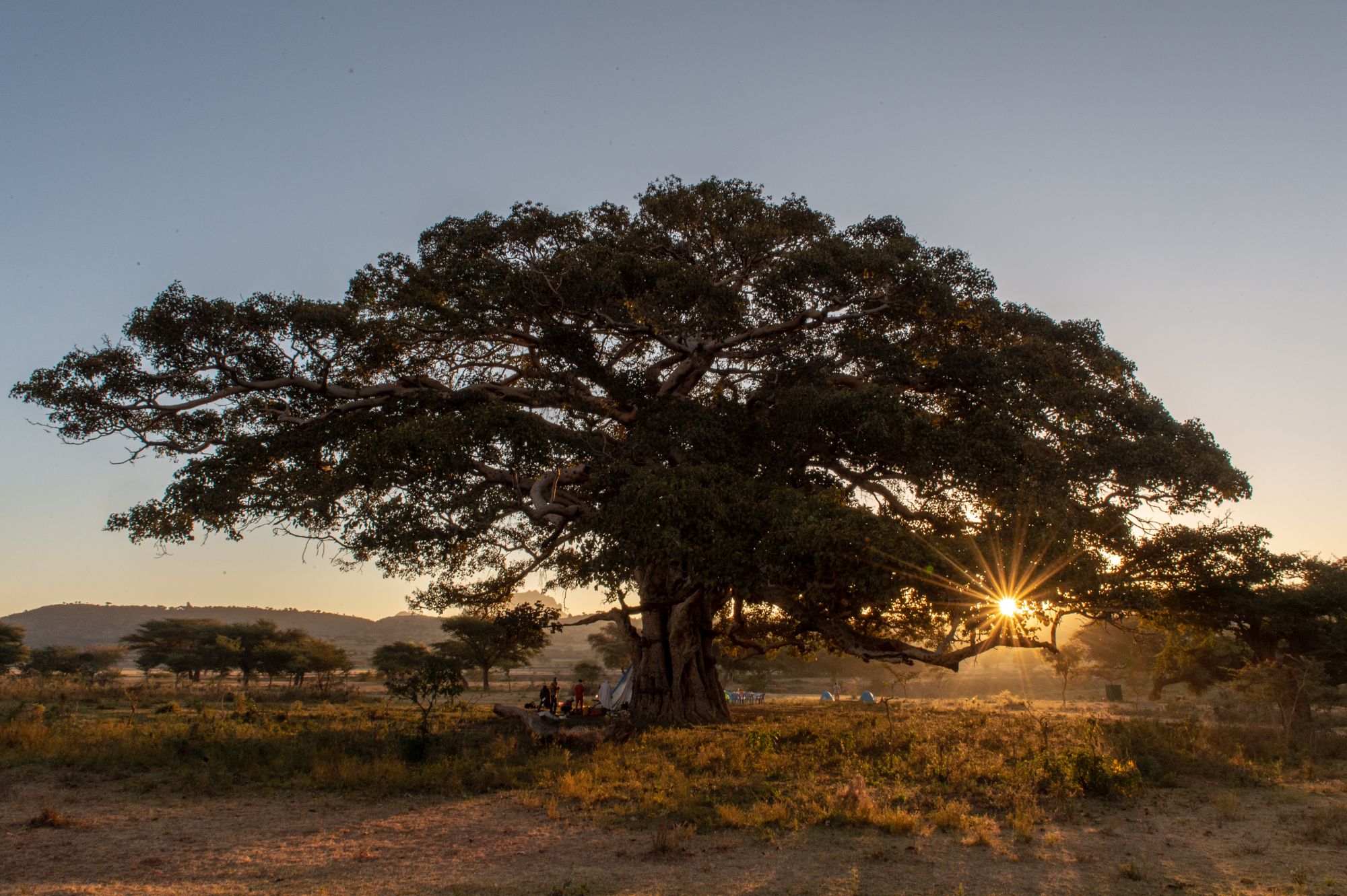
In the village of Dugum, our group of seven travellers is invited to a traditional wedding, where we’re treated as guests of honour with platters of fresh injera and homebrew served from a rusty US Aid tin can.
Having spent all night in church, the weary white-clad couple eventually emerges from a simple homestead after dusk. As the revelry intensifies, I’m swept up in a fervour of beating drums and the strumming of masenqo stringed instruments. Even the dud AK47s proudly worn by some guests as status symbols no longer pose any threat.
Living several hours from the nearest road, these people rarely run into farangis (foreigners), making tourists a welcome novelty rather than a nuisance.
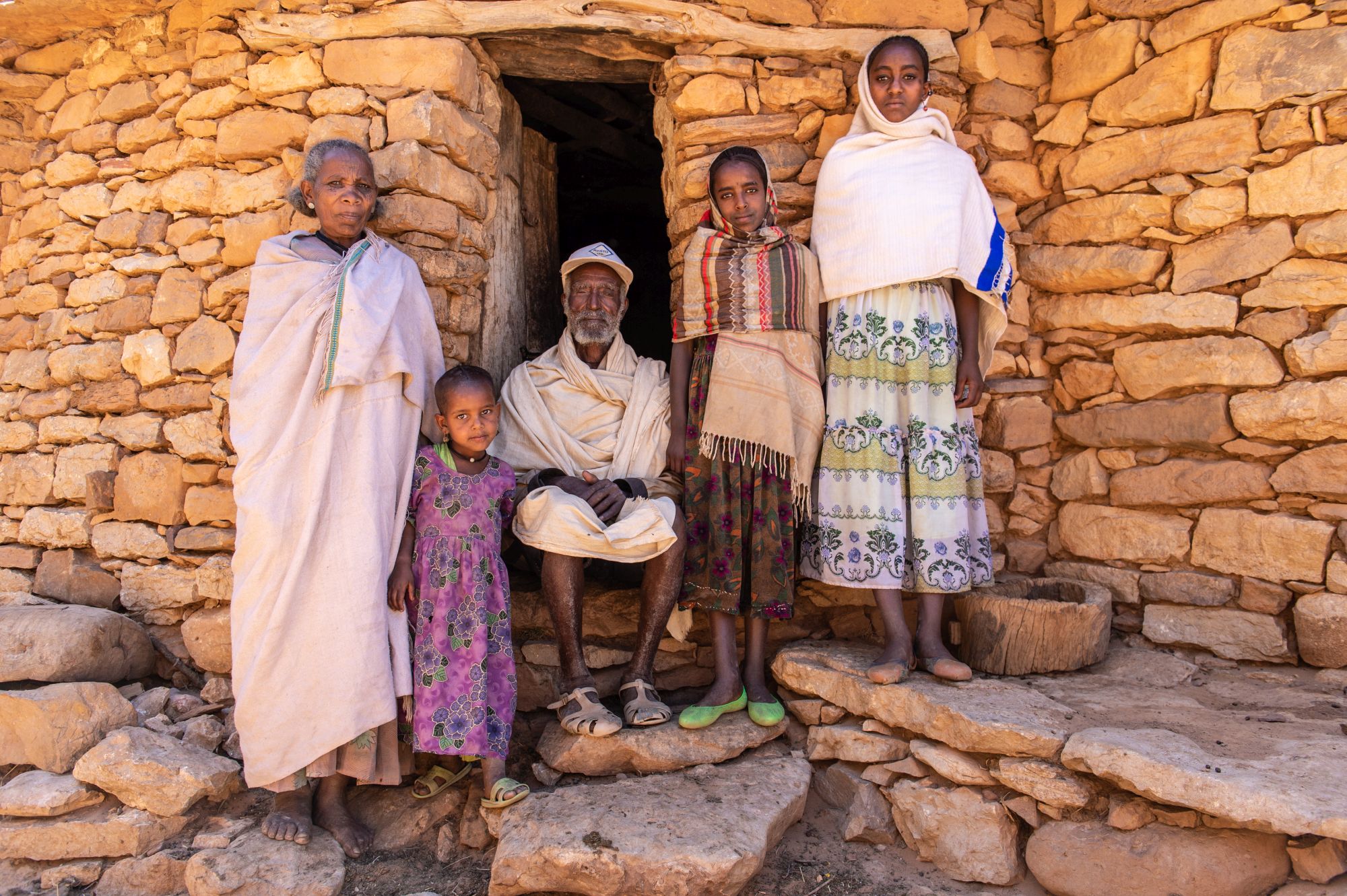
A day later, jovial farmer Abraham beckons us into his 200-year-old farmhouse, where his granddaughter Medhin toasts coffee on an open fire. Sitting on baboon-skin stools, we communicate with laughter and sign language, and exchange our Tupperware boxes of tuna pasta for some of the finest homecooked injera and shiro wat (a chickpea stew) I’ve ever tasted.
Crawling through tunnels of paddle cacti and edging along trails with sheer drops, paths connecting the Gheralta Mountains aren’t always easy, and at times we all struggle. Reputed to be the scariest church in the world, Abuna Yemata Guh even requires a vertical climb to reach its hallowed hollows – although the availability of a harness and ropes mean even sprightly 80-year-olds can access it with (relative) ease.

Exploring these rock churches is fascinating, but the real fun lies in joining the dots in between.
For our final night, we camp in the Korora cave, once used by rebel Tigrayan forces as a hideout before they marched on Ethiopia’s capital Addis Ababa and overthrew the ruling communist regime in 1991. Ruins of crumbling buildings can still be seen beneath an overhang, along with the slogan: “Victory for our country,” etched into the rock.
As night falls and the sky explodes with stars, villagers join us for a party. Fuelled by slow-roasted lamb and local Habesha beer, men dance around a bonfire, singing wistfully about their brothers lost in battle. Setting any sadness aside, the mood is celebratory and upbeat; Ethiopians, I’m learning, always focus on the brighter side of life.

Captivated by the moment, one invalid uses his crutch to leap over the ferocious flames; showing solidarity, a senior member of our group ceremoniously tosses her walking stick into the pyre.
Bound by unfaltering faith, these people are strengthened by a spirit which surpasses any religion. In the Gheralta Mountains, where time stopped at the last road many miles from here, the open heavens provide a roof for the most impressive church of all.
How to get there
Ethiopian Airlines (ethiopianairlines.com; 01753 967980) flies from Heathrow and Manchester to Addis Ababa and on to Gondar with a modern fleet. Fares starts from £697/AED3,197.01 return.

















